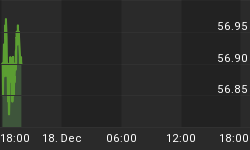There is a sense of incredulousness regarding the recent price action. The market seems to levitate day in and day out despite the news. Dips are limited to 15 minutes of intra-day action. Volume? We don't need no stinking volume. From this observer's vantage point, it just doesn't smell right, but who am I to argue with the market? Since the low on October 4, the SP500 has traveled 20%. From those same lows to the end of October, the SP500 traveled 16.67%. Since November 1 to Friday's close, the SP500 has earned 2.9%, which annualizes to about 15%. This is what one would expect from the price cycle as the best gains occur when investors are bearish and then the gains become a bit more begrudgingly. Of course, that is all in the past. The question everyone wants the answer to is "what's next?"
With the "dumb money" indicator approaching bullish extremes, the market is at the juncture where there are really only two outcomes. One, the market rolls over as the overbought and overbullish conditions lead to a correction. Or in option two, the market just continues to levitate higher as overbought becomes more overbought, and this multi-week rally morphs into a multi-month rally. Not particularly insightful, but in the current market environment, where you need to suspend any kind of common sense or logic, that is about the best I can do. Somewhere in here and over the next couple of weeks, we should have a resolution to the question of "what's next?".
When it comes to equities, our portfolios are positioned bearishly, yet, we have our "line in the sand". I have stated for weeks that the only way we will know that the Fed and ECB have averted a "crisis" -- and you can pick from several percolating around the globe -- is by having higher prices. A monthly close over the simple 10 month moving average by the SP500 would be one such indicator.
The "Dumb Money" indicator (see figure 1) looks for extremes in the data from 4 different groups of investors who historically have been wrong on the market: 1) Investors Intelligence; 2) MarketVane; 3) American Association of Individual Investors; and 4) the put call ratio. This indicator shows neutral sentiment, but it is nearing extremes in bullishness.
Figure 1. "Dumb Money"/ weekly
Figure 2 is a weekly chart of the SP500 with the InsiderScore "entire market" value in the lower panel. From the InsiderScore weekly report: "With the vast majority of insiders locked-up and prohibited from trading until after their companies announce Q4'11 earnings, trading volume was extremely - and not unexpectedly - low this past week. Volume should remain thin through the end of the month and then ramp up dramatically as earnings season gets started."
Figure 2. InsiderScore "Entire Market" value/ weekly
Figure 3 is a weekly chart of the SP500. The indicator in the lower panel measures all the assets in the Rydex bullish oriented equity funds divided by the sum of assets in the bullish oriented equity funds plus the assets in the bearish oriented equity funds. When the indicator is green, the value is low and there is fear in the market; this is where market bottoms are forged. When the indicator is red, there is complacency in the market. There are too many bulls and this is when market advances stall. Currently, the value of the indicator is 63.41%. Values less than 50% are associated with market bottoms. Values greater than 58% are associated with market tops.
Figure 3. Rydex Total Bull v. Total Bear/ weekly
TheTechnicalTake offers a FREE e-newsletter: HERE
















